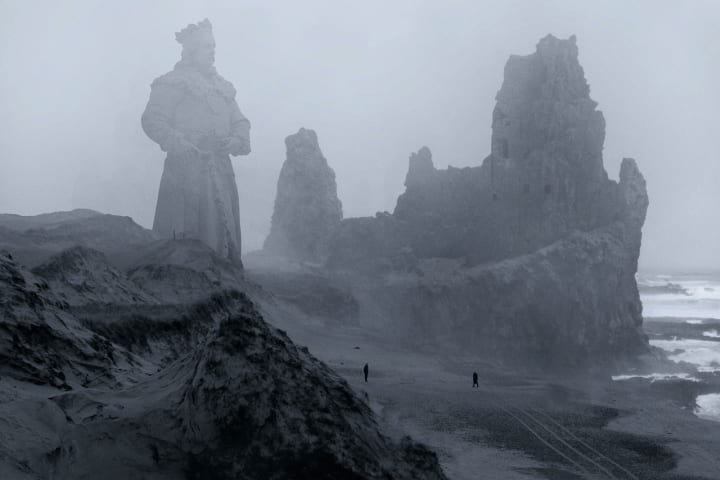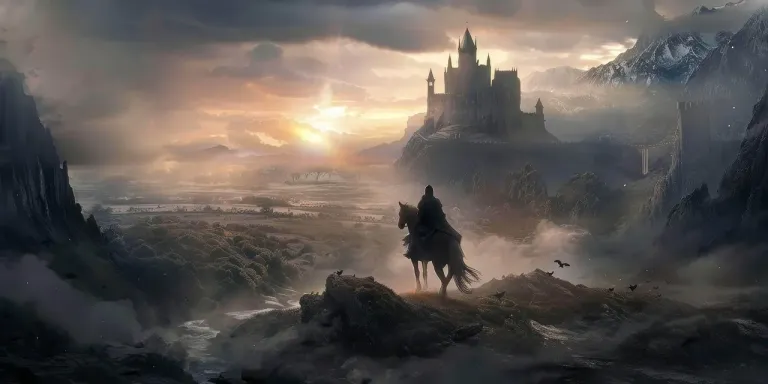Naupa and the Secrets of Hyperborea: Has a Lost Arctic Civilization Been Discovered?
Whispers from the Ice
In the furthest reaches of our imagination lies a land not found on modern maps. A forgotten kingdom beyond the north wind. A realm veiled in snow, mystery, and silence, Hyperborea. Ancient Greek philosophers and mystics once spoke of it in hushed tones, describing a radiant civilization untouched by time, blessed by the gods, and protected beneath the dancing veil of aurora.
For centuries, Hyperborea was dismissed as a myth. A poetic dream. A metaphor for divine perfection. What if it were real? What if recent discoveries, strange artifacts, underground temples, and geological anomalies in the Arctic Circle are not coincidences, but the quiet return of a truth long buried beneath ice and centuries of silence? And what if the key to unlocking Hyperborea secrets lies not in Greece, nor Atlantis, but in an obscure, stone-hewn chamber deep in the Andean mountains of Peru, Naupa Iglesia?
Naupa Iglesia: The Portal Temple of the Andes
High in the Sacred Valley of Peru, carved into the granite cliffs, lies a site unlike any other. Locals call it Naupa Iglesia, “The Church of Naupa.” But this is no ordinary shrine. There are no altars to saints or images of Christ. Instead, there is something older. Much older.
Within the chamber rests a mysterious, perfectly-carved stone altar shaped like a three-step platform, an Andean chacana, a symbol believed to represent a gateway between worlds. Beside it, embedded into the wall, is a portal-shaped door, flawlessly chiseled with unnatural precision, leading nowhere. Or so it seems.
The interior geometry of Naupa Iglesia is unlike any Incan or pre-Incan structure. The angles are crisp, the symmetry mathematical. The chamber is cut from solid rock with laser-like precision. It vibrates with a stillness not of this world. But why would an ancient people build a perfect stone doorway into a solid cliffside? Why does it mirror certain megalithic structures found in far-off lands, like those in Egypt, Siberia, and even beneath Arctic ice? Because Naupa Iglesia may be more than just a temple. It may be a resonance chamber, a portal, a memory of something that once connected our world to another. And the name “Naupa” itself hints at what that connection might be.

Naupa and the North: A Linguistic Trail
The word “Naupa” is not fully understood, but it appears in Quechua, the language of the Andes, where it can mean "before," "ancient," or "first." The first ones. The elders. The original beings. But what if Naupa doesn't just mean ancient, it means the ones who came before, from the North? Throughout dozens of mythologies, from the Norse to the Vedic, from the Hopi to the Siberian Yakuts, there are legends of a great civilization that existed far to the north, in a land bathed in eternal light. These beings were tall, luminous, technologically advanced, and spiritually evolved.
They were said to have retreated when the Earth changed. When the axis tilted. When the ice swallowed their homeland whole. Many of these myths speak of survivors who journeyed south, bringing knowledge, symbols, and memory. Some went to Egypt. Others to the Americas. And perhaps, some to the Andes.
Could the builders of Naupa Iglesia have been descendants of these northern sages? Was the temple a recreation of something far older, something that once stood beneath Arctic skies?
Hyperborea: The Shining Island Beyond the Wind
The Greeks described Hyperborea as a land of eternal spring, where the sun never set and the gods walked freely among men. It lay “beyond Boreas,” the god of the north wind, thus, Hyperborea. Pythagoras, Herodotus, and Pliny all referenced it. The Greek poet Pindar called it “a land of dreams, untouched by illness or war.” Its people lived a thousand years in peace and contemplation. They communicated with the Earth and the stars. But they vanished.
According to ancient accounts, Hyperborea disappeared in a sudden, cataclysmic event. Some say a pole shift. Others, a war among gods. The survivors went south, bearing symbols and star knowledge. Some suggest they became the Druids. Others think they seeded the mysteries of the Andes and Egypt. And now, as ice melts and the Earth’s magnetic field shifts once more, traces of this civilization are beginning to surface.
Clues Beneath the Arctic Ice
Recent satellite imagery has revealed curious geometric patterns beneath the ice sheets of Greenland and northern Russia. Lines that stretch for kilometers, too straight to be natural. Grid-like foundations. Subsurface domes. In 2016, Russian scientists studying Lake Vostok in Antarctica discovered microbial life that had never been catalogued. In 2020, seismic studies detected massive voids beneath Greenland, vast, empty spaces suggestive of artificial structures buried for thousands of years.
And then, there are the megaliths of Franz Josef Land, an icy archipelago in the Russian Arctic. Isolated, cold, and desolate, yet there are reports of unnatural stone formations arranged in deliberate, almost ritualistic patterns. Could these be outposts of Hyperborea? Could these ruins, frozen and forgotten, be pieces of a once-vast civilization whose main sanctuary now lies entombed beneath ice?
The Return of the Polar Memory
Mystics, shamans, and esoteric writers from Blavatsky to Rudolf Steiner all hinted at a “polar origin of humanity.” According to theosophical traditions, the first true civilization began in the north, not in Africa, not in Sumer, but at the Pole.
This civilization, spiritual and pure, was not physical in the way we understand. It was energetic, luminous, almost angelic. Over time, it densified, became material. The Fall was not just spiritual, it was physical. From Hyperborea to Atlantis, from Atlantis to us. But memory is a cycle.
And now, as magnetic poles shift and the ice recedes, this memory stirs. Naupa Iglesia may be a doorway not to a physical location, but to a conscious state, a coded frequency, a memory embedded in stone. The sacred geometry of the temple mirrors star maps found in the Arctic sky 12,000 years ago, before the end of the last Ice Age. It is as if the stone remembers.
The North Beckons Again
Hyperborea is not just a myth. It is a ghostly fingerprint left on the world, a whisper from a forgotten age. It lingers in our myths, our dreams, our DNA. It speaks through symbols etched in stone, through portals carved into sacred rock, through songs of peoples who still remember the shining ones from the north.
Naupa Iglesia is not alone. It is one of many gateways scattered across the Earth, waiting. As science edges closer to confirming lost civilizations beneath the poles, and ancient structures defy explanation across the continents, we are forced to ask: What if our deepest myths are not fiction, but memory? The North is calling. The ice is melting. And the door may soon open.
Blog History #mysticism #religion #conspiracy #alien #ufology #myth #writer #story #news #ancient #articles #writer #spiritual
Posted by Waivio guest: @waivio_cosmicsecrets
